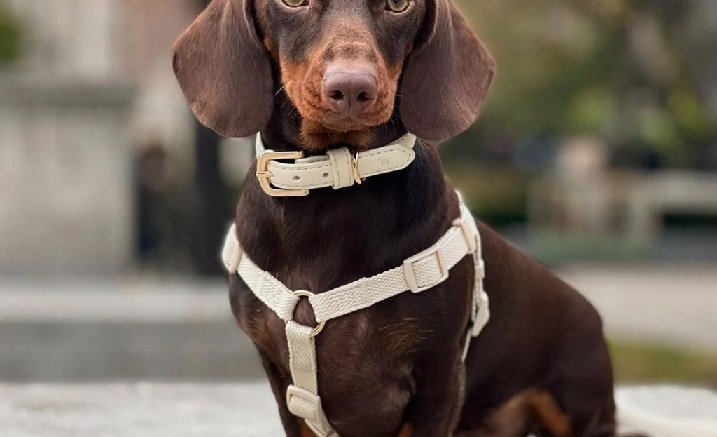Ancient Cat and Dog Breeds and Their History

Our pets have become an important part of the fabric of our lives. But this isn’t a modern phenomenon – throughout history, cats and dogs have been an integral part of human society. In addition to providing companionship, these animals have been used for hunting, guarding, and spiritual purposes.
We’ll take a look at the fascinating histories of some of the oldest known cat and dog breeds, shedding light on how they’ve evolved over time and their impacts on culture and history.
Cats in Ancient Civilizations
The story of the domestic cat starts in the Near East around 9,000 years ago. The Felis lybica, or African wildcat, is the most likely ancestor of our modern domestic felines.
The Egyptian Mau
The ancient Egyptians were among the first civilizations to truly domesticate cats. They revered these creatures, associating them with the goddess Bastet (also known as Bast), who was depicted as a lioness or as a woman with a lioness’s head. The Egyptian Mau, one of the oldest cat breeds, shares a close resemblance to the depictions of cats seen in ancient Egyptian art.
Genetic research indicates that the Egyptian Mau is descended from African wildcats, which were tamed by Egyptians and used to control rodent populations. Archaeological evidence, such as the discovery of a cat buried with its owner in a 9,500-year-old grave in Cyprus, reinforces this relationship.
The Turkish Angora
Further to the north, another ancient breed, the Turkish Angora, was being developed. Originating in the Ankara region of Turkey, these cats were cherished for their elegance and long, silky coats. They were kept in the Ankara Zoo to preserve the breed, and it is believed that these cats were the first long-haired breed in Europe.
Dogs Through the Ages
Just like cats, dogs have been domesticated for thousands of years, with evidence suggesting domestication possibly occurred as early as 20,000 to 40,000 years ago. Unlike cats, dogs have been selectively bred for a vast range of purposes, leading to significant diversification. Possibilities now are endless with mixed breed dogs like Kelpie Cross Labradors, Labradoodle, and Cockapoo, just to name a few.
The Basenji
The Basenji, known as the “barkless dog,” is believed to be one of the most ancient dog breeds. Originating in Central Africa, the Basenji has a history that dates back to the Twelfth Dynasty of Egypt, as they are often depicted in artefacts from this era. Basenjis were used for hunting, their keen senses and speed made them excellent at flushing game into nets. Despite their age, Basenjis have retained many traits from their wild ancestors, including a unique vocalisation described as a yodel or a howl, known as a “barroo,” rather than a typical dog bark.
The Saluki
In the Middle East, the Saluki, or Persian Greyhound, was held in high regard. Salukis are depicted in ancient Mesopotamian and Egyptian art, and carvings of dogs resembling Salukis date back to 7000 B.C. These dogs were often associated with royalty and nobility, and they were used for hunting because of their incredible speed and endurance. The breed’s name even comes from the ancient city of Saluk, which was famed for its speed.
Evolution Over Time
Over the centuries, as human society evolved, so too did our feline and canine companions. As humans began to settle and form agricultural societies, cats were appreciated for their ability to control pests, while dogs were bred for various purposes including hunting, guarding, and companionship. This selective breeding led to the development of distinct breeds with unique traits and temperaments.
For instance, the Egyptian Mau, prized for its hunting prowess, has evolved into a strong, agile breed with a unique spotted coat, while the Turkish Angora, valued for its luxurious fur, has maintained its long, silky coat through the centuries.
Likewise, the Basenji and Saluki, initially bred for their hunting abilities, have retained their athleticism and speed. In addition, they both have strong instincts and are often aloof, traits that were useful for hunting dogs but can present challenges in a typical pet setting.
Cultural Impact
Cats and dogs have had a profound impact on human culture and history. In ancient Egypt, cats were considered sacred and were even mummified, while dogs like the Saluki were revered by nobility and often depicted in art.
In later periods, dogs and cats began to take on symbolic roles in various cultures. Dogs are frequently portrayed as loyal, vigilant, and protective, whereas cats are often associated with mystery, independence, and sensuality.
In modern times, the popularity of specific breeds often reflects societal trends and values. For instance, the rise of apartment living has led to an increase in popularity for small, low-energy dog breeds and independent cat breeds.
Conclusion
Through archaeological, historical, and genetic research, we can trace the evolution of ancient cat and dog breeds and understand their significance in human history. As we continue to uncover more about their past, our relationship with these animals grows deeper, revealing an interwoven history that spans thousands of years. In every purr and wagging tail, we see a thread that connects us to our ancestors, reminding us of our shared past and our enduring bond with these remarkable creatures. Let’s never forget that the lives of our pets are a reflection of the care we give them, as well as the responsibility that pet ownership entails.












